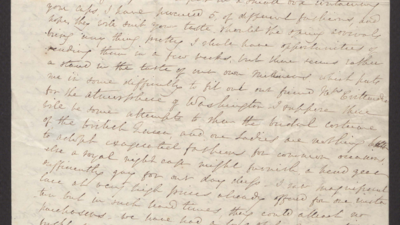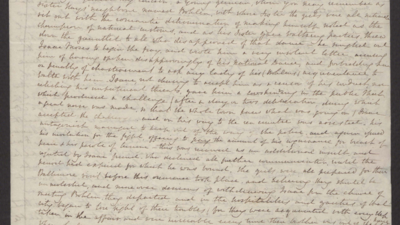Oral History Interview with Samuel Flor
Title
Date
Contributor
Summary
Samuel Flor1 was born in Czernowitz, Romania. He talks about experiencing antisemitism, his education, and his career as a composer, musician, and a professor at the university in Czernowitz.
He describes life in Czernowitz first under Russian and then under German occupation. He explains why it was impossible to leave and how he and his wife, Gertrude tried to escape in June, 1941, but failed. He was part of a brutal roundup of Jewish men, and had to bury Jewish men who were machine-gunned to death by Germans near the River Prut. After being tormented by the Germans, the survivors, including Samuel Flor, returned home.
In October, 1941 all Jews had to move into a ghetto until they were deported to the Ukraine under terrible conditions, including periodic whippings by both German and Romanian soldiers. He describes a particularly cruel incident involving Jews from Mogilev, a forced circular death march, and several atrocities committed by Ukrainian peasants. Mr. Flor worked as a slave laborer in a stone quarry in Ladesti on the Bugac and in Tulchin in a hospital.
He relates a chilling vignette in which Sonderführer Fritz von Rohde explains why killing Jews is a service to humanity.
As the Germans retreated Mr. and Mrs. Flor and about 66 other people hid in a hole they had dug previously for more than three days, until March 15, 1944. He describes how the 300 Jewish survivors tried to cope once the Russian army came, and his return to Czernowitz. His apartment had been nationalized so Mr. and Mrs. Flor joined the Czech army. He explains how they got out of Prague, emigrated to Barranquilla, Colombia, (South America) and then to the United States where Mr. Flor continued his musical career.
More Sources Like This
of
Hans Thalheimer
Hans Thalheimer was born in 1921 into a large, middle class family in Stuttgart, Germany. His father had served in the German army during World War I and received many medals and a battlefield commission. When Hans was five years old, the family moved to Tübingenand later to Zittau. The antisemitism he encountered in school and daily life, even before Hitler came to power, made a lasting impression on him. He explains his father’s decision to leave Germany and emigrate to Belgrade, Yugoslavia with his family in 1933. He describes their comfortable existence as well as Jewish life there until, under German pressure, foreign Jews started to be deported from Yugoslavia in 1938. His father returned to Germany twice in 1938 to urge his relatives to flee, was arrested briefly and released.
A Swiss consul in Belgrade provided them with a false Visa. He describes in detail how, leaving everything behind, the entire family was smuggled into Italy and later permitted to enter Switzerland with these false papers. They stayed in Switzerland until they emigrated to the United States in 1939. Here, with the help of HIAS and Hebrew Shelter, they attempted to get more relatives out of Germany.
Hans enlisted in the United States Army in 1942. He describes his service with the US Military Intelligence in Berlin, Germany, attached to the 82nd Airborne Division. While in Berlin, he helped survivors of concentration camps. Many members of his extended family perished, but his grandmother returned from Theresienstadt and went back to Stuttgart. He believes that Jewish refugees allowed entry into the United States made many contributions.
Interviewee: THALHEIMER, Hans Date: April 21, 1985
of
Victor Cooper
Victor Cooper2 was born December 26, 1914 in Strzemieszyce, Poland, the youngest of four brothers. He was married and had a six-month old son when he was drafted into the Polish Army in 1939. His wife, son and all of his family perished during the war years.
Victor describes how he was captured by Germans in 1940and was segregated from non-Jewish POWs at Majdanek death camp in Lublin. He escaped with the help of a fellow Jewish prisoner, and fled back home where he was in Strzemieszyce Ghetto for a short time,subjected to forced labor and witnessed the liquidation of the ghetto and German atrocities. He was then deported to 10 labor and concentration camps, including Będzin, Markstadt, Gross Rosen, Flossenbürgand Buchenwald. He vividly describes his experiences, conditions, backbreaking cement work and digging tunnels and how he fought to stay alive. He details a month-long death march from Buchenwald to Dachau in April 1945, during which he escaped and was recaptured several times.
In May, 1945, he was found hiding in Bavarian woods by a Jewish doctor serving with the American 7th Army. He was taken, disoriented and ill, to a Catholic hospital in Straubing. After his recovery, he worked with an American lawyer, helping to regain possession of Jewish property in the area. In June 1949, he emigrated to the United States under the displaced persons quota. He held many jobs with the United Service for Young and New Americans and several trade unions. He remarried and fathered two children. His daughter became a lawyer and his son is a professor at Columbia University.
Former last name was Kupfer.
This was recorded at the 1985 American Gathering of Holocaust Survivors in Philadelphia, Pa.
of
Ellen Tarlow
Ellen Tarlow, née Meinberg, was born in 1927 in Gütersloh, Westphalia, Germany, where her family had lived since the 17th century. Her father, Paul Meinberg, an importer of cattle, was decorated with the Iron Cross in WWI. She describes her early childhood in public school and then a Lyceum for girls. She first felt antisemitism at age of eight and was expelled from school in 1938. She studied Hebrew and Bible once a week. She details Nazi atrocities during and after Crystal Night (Kristallnacht): social ostracism, burning of their home and synagogue, her father’s deportation to and flight from Buchenwald. Remaining family found shelter in a local cloister then fled to Bielefeld. She describes subsequent life in a Judenhaus in Gütersloh, including attempts to educate the children there. HIAS helped the family many times; there was also aid from several Germans in Gütersloh. She briefly mentions a failed attempt to emigrate to Haiti. After many disappointments and a difficult experience at the American Consulate in Stuttgart, the family left Germany for the United States, via Lisbon, Portugal, on the SS Mouzinho, in August 1941. She describes the journey from Berlin to Lisbon in a sealed train, and her stay in Lisbon in a group home run by HIAS. She describes how refugees organized to cope with primitive conditions on the ship, her arrival and processing in Staten Island, NY, and her life in New York in a group home for refugees sponsored by HIAS. She reflects at length on the family’s adjustment in the United States and the survivor’s guilt she feels. She talks about her return to Germany, by invitation, in 1985, accompanied by her husband and daughter.
of
Ina Rothschild
Ina Rothschild talks about her life, education and work in Germany after World War I. Both women lived through Hitler’s rise to power, starting in the 1920s, experienced changes in Jewish life after 1933, and explain the effects of these events on the Jewish community and their interaction with Gentiles. Elsa Jaeckel’s husband, a Gentile, refused to divorce her and suffered the consequences. She mentions a group of Jews in Frankfurt who committed suicide to avoid deportation in 1941. Throughout the interview, Mrs. Rothschild cites many instances of aid and acts of kindness by Gentiles.
Mrs. Rothschild and her husband ran a Jewish orphanage in Esslingen am Neckar, near Stuttgart from 1933 to 1942 when they were deported. The orphanage was ransacked on November 9, 1938. Her husband was beaten, arrested, but later released to care for the displaced orphans. She describes what happened to the children in their care.
Elsa Jaeckel had to work for the Gestapo with 600 other Jewish women who had gentile husbands. She talks about conditions for couples in mixed marriages and living through air raids in Frankfurt. She avoided the transport to Theresienstadt because her husband bribed a former SA man to let her hide in his house. She hid in the attic until the Americans came in 1945.
When the orphanage was closed, the Rothschilds returned to Stuttgart. She describes their lives, her work in an old age home, and her attempts to care for Jewish children. Many of the children, especially the retarded ones, were deported and killed at Ravensburg. The Rothschilds were deported to an Old Age Home in Theresienstadt on August 22, 1942. She describes the process, the actual transport, arrival at Theresienstadt, and brutal treatment and living conditions which improved once the International Red Cross supervised this institution. She saw Reinhard Heydrich shoot Jewish prisoners. Ina Rothschild worked as a nurse, her husband died in July 1944. Many inmates killed themselves. Ina mentions attempts to care for newborn babies. She also volunteered to care for 50 young children from Holland with typhoid fever together with a Jewish doctor. The children survived and were adopted after the war. She was transported to Switzerland with 600 people in February 1945. Elsa came to the United States in 1957, Ina in 1947.
Note: Collateral Material available through the Gratz College Tuttleman Library:
Scanned copy of a German letter and the translation.

